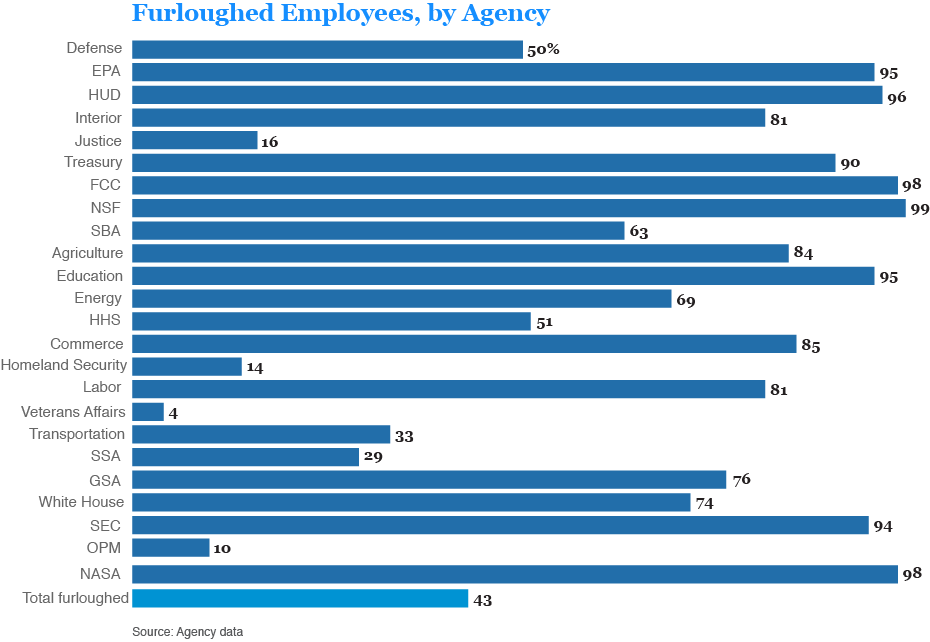Now that Pelosi is slated to take over the House, we can post the full tally of GOP debt accumulation over the past eight years since Republicans were ushered into power in the year of the Tea Party. Since John Boehner was put into the speaker's chair and handed the gavel on January 3, 2011, the debt has increased from $14 trillion to $21.86 trillion, a tab of almost $8 trillion. Just this past year alone, Republicans have increased the debt by almost $1.4 trillion. And in the first two months of fiscal year 2019, the deficit has increased by $305 billion, despite record revenue.
Not only have Republicans failed to cut a single agency of government, they have grown all of the programs Trump promised to cut. Republicans have increased or suspended the debt limit seven times since taking over the House. The only spending cuts they secured were the ones we won in August 2011 by actually blocking an automatic debt ceiling increase. However, that hard-fought and rare victory was completely wiped out by the budget bills in February and March of this year, which dramatically increased spending while suspending the debt limit yet again until March 2019. Now, with interest rates rising fast, we face a crisis just on the interest payments, which are slated to surpass the cost of the military in five years.
But with Pelosi scheduled to take control of the House next week, a GOP committed to reducing the size of government could use her as the perfect foil to push concessions in return for raising the next debt limit. She will be forced to either look weak by giving Trump a blank check for more debt or raise taxes without cutting spending. This week's stealth shutdown, however, should provide conservatives with the perfect opportunity to distinguish the fat from the muscle of government largesse and craft a plan to reduce the debt.
According to OMB data compiled by Government Executive, here are the percentages of federal employees deemed "nonessential" by department (among those departments that don't already have full fiscal year 2019 appropriations):
| HUD | 95.4% |
| Commerce | 86% |
| Treasury | 83.3% |
| Interior | 76% |
| Agriculture | 66.5% |
Obviously, most of the employees of the DHS and Justice are deemed essential and are working this week. But why is nobody asking what can be cut from these agencies with such high percentages of nonessential personnel? The media will virtue-signal over the paychecks of these federal workers, but if the only effect we see from their absence is their own paycheck, shouldn't we have a debate over how many of these positions should exist in the first place, especially in light of a debt crisis?
These are just the departments that are not funded this year. Also, a certain percentage of these departments will not be furloughed even though they are deemed nonessential because they are already funded by appropriations of cross-sectional programs from other departments that have already received full-year funding. There are many more agencies that are already funded but are full of wasteful positions. To get a better sense of how many workers are deemed nonessential during a complete shutdown, here is a breakdown of how many workers are nonessential among all departments that were subject to the 2013 appropriations lapse, when the entire nonessential government shut down.

| EPA | 95% |
| Education | 95% |
| Labor | 81% |
| Energy | 69% |
In total, 43 percent of the federal workforce was furloughed during the 2013 shutdown, but many departments and agencies had as many as 80-95 percent of their employees deemed nonessential. Shouldn't those departments be the first place for any audit on cutting government? Isn't this pure common sense, irrespective of one's political ideology? Of course, nonessential is not synonymous with a completely unnecessary job, but when those workers are the overwhelming majority of staff in a given department, one must ask why the federal government should have that agency in the first place?
For example, with 50 state governments and roughly 90,000 local and municipality governing authorities, why should things local in nature like housing and education be within the federal purview at all? Given the existence of these governing authorities, the federal government should only take on extra functions that are inherently essential. Yet we now spend $71.4 billion on the Department of Education and $42.6 billion on HUD, and that doesn't include the cost of mandatory programs. These are departments where 95 percent of their employees are deemed nonessential. Even at HHS, where we spend almost a trillion dollars on federal market-distorting health care programs that create a monopoly for the insurance cartel, it now costs over $90 billion just in discretionary spending to run the bureaucracy itself controlling the trillion-dollar programs!
It's time to start taking notes on what is truly essential and target the rest for cuts in the coming showdown with Pelosi over the debt ceiling.
Daniel Horowitz is a senior editor of Conservative Review. Follow him on Twitter @RMConservative.





Reader Comments
to our Newsletter